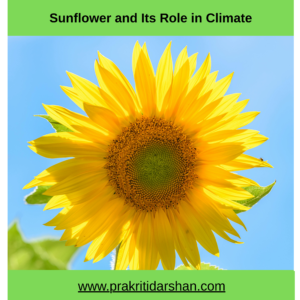A comprehensive draft how Renewable Energy -Green Energy and other renewable energy sources—can address climate change. Featuring country‑wise data, solutions, and actionable suggestions for students, schools, NGOs and the public.
Renewable Energy -Green Energy Sources – Save Our Planet :
Climate change and fossil‑fuel dependence threaten our planet. Renewable energy—especially solar and wind energy—is growing rapidly and offers a clear path to decarbonisation. This article elaborate how renewable energy sources can truly save our planet.
Global & Country‑Wise Data : Renewable Energy -Green Energy
Global Trends in Renewables (2023–2024)
| Metric | Value |
| % of global electricity from renewables (2023) | ~30 % |
| New renewable electricity added in 2024 | +858 TWh (49 % increase) |
| Share of new capacity from solar & wind | ~95 % by 2030 |
Installed Renewable Capacity by Country (2024)
| Country / Region | Installed renewable capacity (GW) | Share of country’s electricity |
| China | 1,878 GW | 29.4 % renewables by 2021; forecast 36 % by 2025 |
| United States | ~11 % of global renew. generation | |
| India | ~203 GW renewable capacity, ~46 % capacity share | 50 % non‑fossil capacity in 2025 |
| Brazil | ~34 GW solar; ~15 % electricity share | |
| Germany | ~82 GW solar (2023), solar ≈15 % power (2024) |
Growth in Renewable Power Capacity (2023)
| Technology | Capacity added (GW) |
| Solar PV | 346 GW (≈73 % of additions) |
| Wind | 116 GW |
Mid‑Term Forecast (to 2030)
| Forecast Metric | 2030 Estimate |
| Renewable electricity generation | |
| Share of global electricity | ~46 % |
| Share of solar + wind in renewables | ~30 % of total electricity by 2030 |
Solutions & Pathways
Accelerate solar + wind installations: These account for ~95 % of renewable capacity growth through 2030 .
Promote energy storage & grid flexibility (Battery & pumped hydro)
Adopt carbon pricing & clean energy policies (e.g. EU solar leadership, CO₂ taxation)
Support R&D and innovation, especially in emerging technologies like geothermal, hydrogen, biomass
Suggested Roles : Renewable Energy -Green Energy
Students:
Join campus green clubs
Advocate for solar panels at school
Use energy‑saving methods and social media to educate peers.
Aware your parents about Renewable energy and aware public .
Participate in debate related to energy saving etc.
Participate in plantation campaign .
Support green and save energy .
Schools:
Install rooftop solar
Hold renewable energy awareness events
Integrate hands‑on projects (like mini-wind turbines) into STEM curriculum
Educate people and students about Renewable energy .
Organize debate or such events .
NGOs:
Run community solar or wind initiatives
Lobby local authorities for renewables-friendly policies
Organise public workshops
Public:
Choose green energy tariffs
Install rooftop solar or small wind
Reduce energy consumption (LEDs, smart meters, EVs)
Summary
Renewable energy—including solar energy, wind energy and other green energy sources—is scaling rapidly worldwide. With strategic investments and policies, it can meet nearly half of global electricity by 2030. Major powers like China, India, the EU and Brazil lead the transition.
Conclusion
Yes—renewable energy can save our planet if global coordination accelerates capacity deployment, grid infrastructure and supportive policy. It’s a realistic route to decarbonise, improve energy security, and empower communities worldwide.
FAQs
- Is renewable energy really renewable?
Yes. It’s drawn from natural flows like sun, wind and water, which replenish continuously. - Can solar & wind fully replace fossil fuels?
By 2030 they can provide nearly half of global electricity; with storage and policy, full replacement is possible by mid-century. - Which country leads in capacity?
China leads with ~1,878 GW of renewables; China and EU together produce ~32 % of global renewable electricity . - How much did solar grow in 2023?
Solar added 346 GW in 2023—nearly 73 % of all new renewable additions . - What share of energy is renewables in India?
India had ~46 % renewable energy capacity share and reached 50 % non‑fossil capacity by early 2025 . - Are renewables cost‑effective?
Yes. Costs of solar and wind energy or panel is decreasing continuously due to scale and innovation. - What supports storage growth?
Battery systems, pumped hydro (e.g. Himalayan projects), grid modernization. - Can students make real impact?
Absolutely—via awareness, advocacy, projects, and daily energy-saving choices. - What policies speed transition?
Carbon pricing, green tariffs, investment incentives, research funding. - Will renewables reduce emissions?
Yes—scaling them replaces fossil generation and cuts CO₂ emissions significantly. - How to make renewables equitable?
Community solar, subsidies for low-income households, public‑private partnerships. - Can renewables provide base‑load power?
Combined with storage and dispatchable sources (hydro, biomass, nuclear), yes. - What’s the role of hydrogen?
Green hydrogen, made using renewable energy, acts like a clean fuel battery—it can store excess energy and help reduce carbon emissions in industries and transportation. - Is geothermal a significant source?
Currently smaller (~1 % share), but growing, especially in geologically active regions . - How fast should renewables grow?
Global capacities must nearly triple by 2030 to meet 1.5 °C goals; current growth falls short without policy boost .
References
- Global data on growth and shares in renewable electricity
- Country statistics: China, India, Brazil, Germany, USA
- Policy & outlook coverage (Washington Post, Reuters)
PRAKRITI DARSHAN-NATURE AND ENVIRONMENT MAGAZINE
Prakriti Darshan is a leading Hindi-language magazine and digital platform dedicated to raising public awareness on vital issues related to nature, biodiversity, climate change, sustainable development, and environmental conservation. This magazine represents a unique blend of science, society, and sensitivity—offering a common platform for researchers, students, NGOs, policymakers, nature lovers, and conscious citizens alike.
With thought-provoking articles, inspiring stories, environmental research, impactful projects, and policy perspectives, Prakriti Darshan is a transformative journey toward a greener and more sustainable future.
Let us come together to protect and preserve our planet for generations to come. 🌿🌍
Join us in our mission to protect and celebrate the planet. 🌏💚
Click for more information
- Visit www.prakritidarshan.com for Free Magazine ,Free membership benefits ,offered price magazine @ Rs.1 or Rs.11 only and more ……
- 🎗️Sponsor Prakriti Darshan Magazine – Support our environment mission.
- 📚 Explore the Environment Magazine – Read our latest and past issues.
- ✍️ Read Editor’s Article or Blog – Insightful thoughts from our editorial desk.
- 🌱 Join Membership – Be part of India’s leading green community.
- 🤝 Become an NGO Impact Story Partner – Share your grassroots impact nationwide.
- 🏢 Become a Company Partner – Showcase your CSR, ESG, or sustainability work.
- 👤 Become an Individual Partner – Volunteer, write, and raise your green voice.
- 📢 Advertise with Us – Reach eco-conscious readers across India.
- Eco Trails Newsletter
- Donate for “Hari Ho Vashundhara & Har school Hariyali “ Plantation campaign Associated Partner NGO :GDSS NGO www.gdssngo.org
BALA DATT SHARMA,
MANAGING EDITOR ,
PRAKRITI DARSHAN-NATURE AND ENVIRONMENT MAGAZINE
- Indoor Plants – Money Plants – Benefits, Care & Top 15 Plants with Special Focus on Money Plants - September 12, 2025
- Sunflower and Its Role in Climate: A Comprehensive Study on Uses, Benefits, and Global Importance - September 12, 2025
- Endangered Species USA – Conservation Challenges, Data, and Future of Wildlife - September 11, 2025







